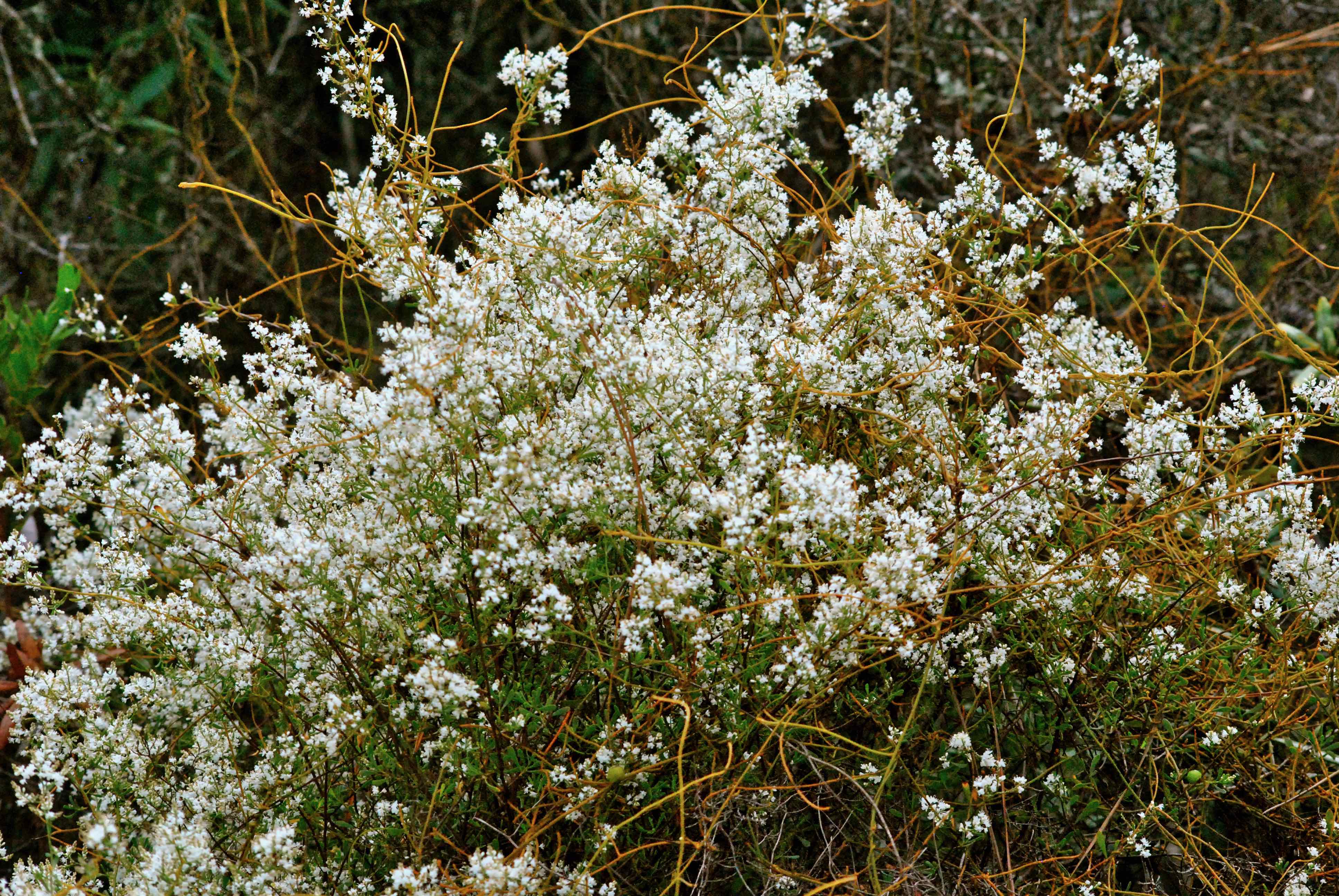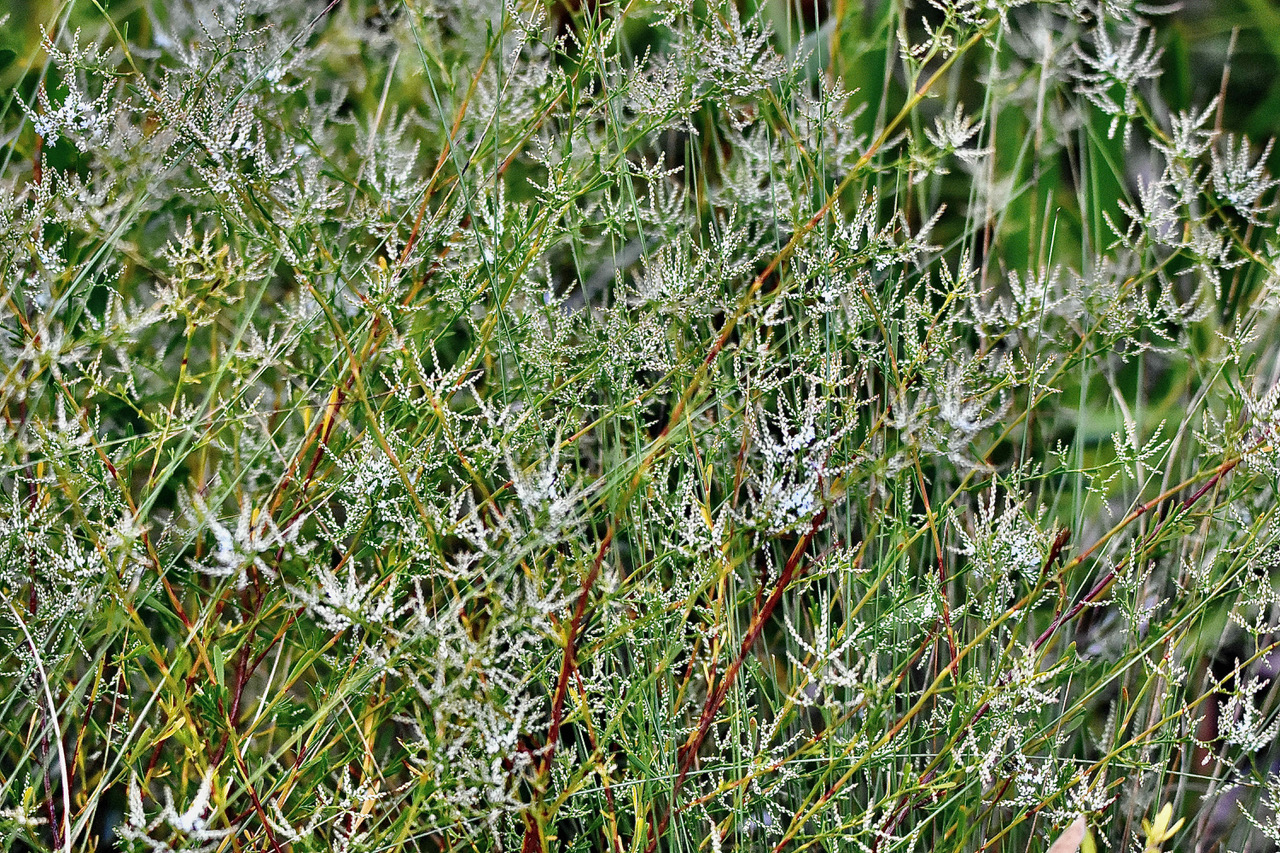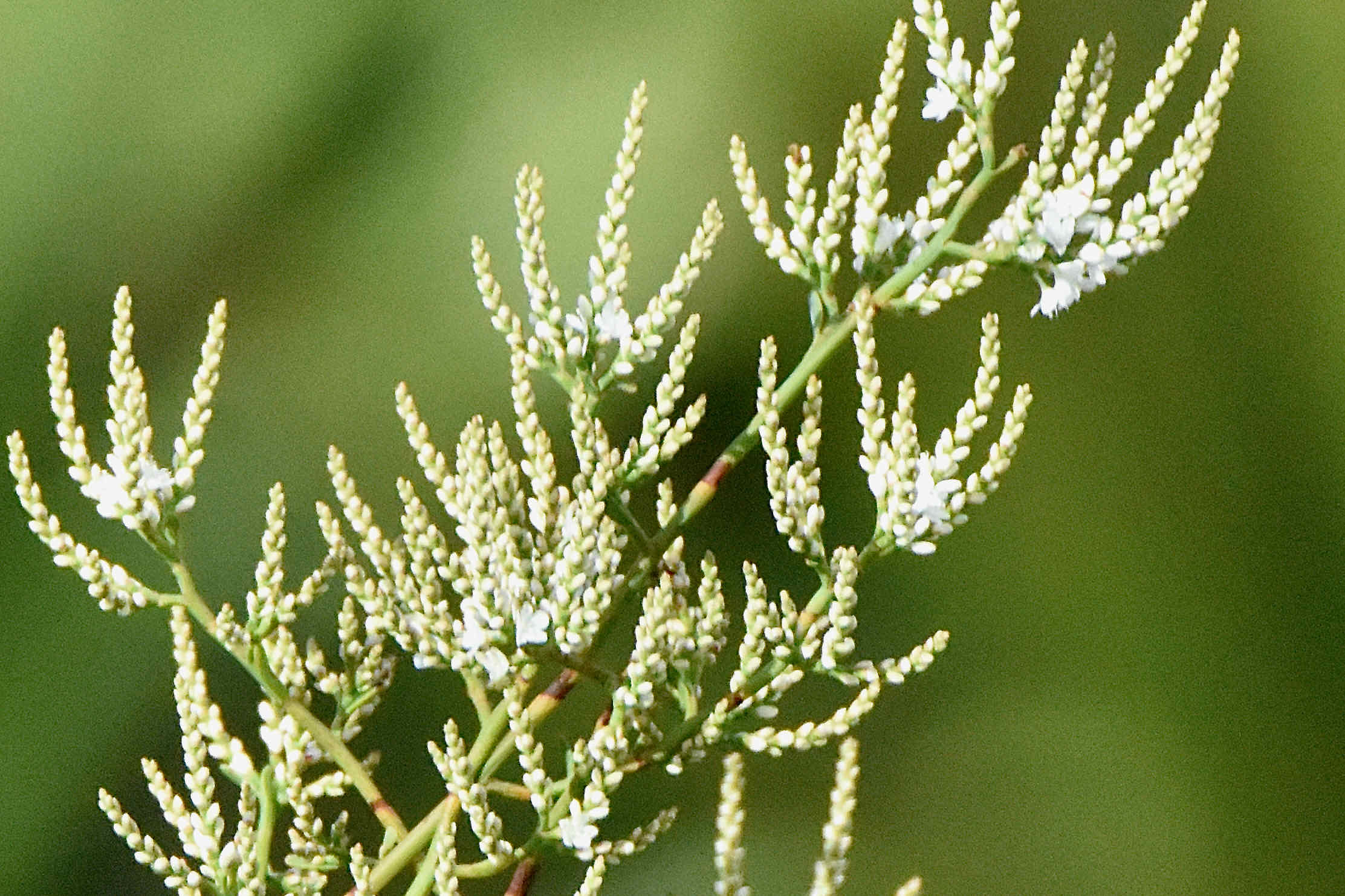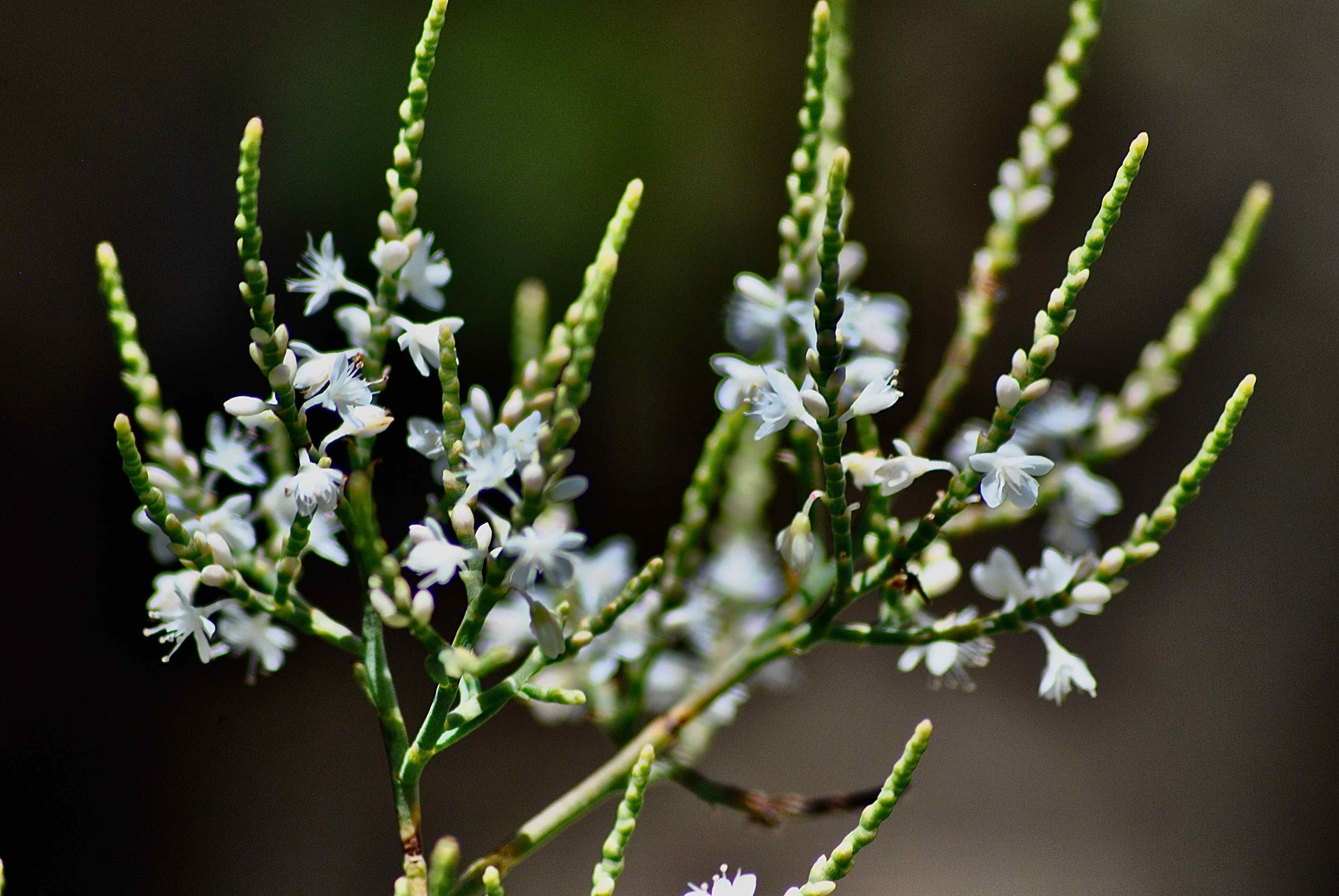
October flower, photographed at Seacrest Scrub Natural Area, Boynton Beach, Palm Beach County, in September 2013.
October flower, Polygunum polygamum, is among our favorite wildflowers if for no other reason than its name. Well, despite its name, in a sense — it blooms here in late summer, as early as July rather than October as it does in parts north.
But finding it in full flower on a hot August afternoon serves as a harbinger of cooler days ahead. Covered with small white blooms, it can brighten up an otherwise drab landscape.
October flower is a Florida native found in about two-thirds of the Sunshine State’s 67 counties. One South Florida exception: Monroe County.
For the first part of the year, it’s easy to ignore October flower. In winter and early spring, there’s not much to catch your eye. That starts to change later in spring, as the plant seems to spring to life, putting out new branches and greenery. By August or so, it starts to bloom in full force here in South Florida.
October flower is classified as a “subshrub,” which may grow to two to three feet tall, with an equal spread. It can be erect or leaning along the ground — decumbent as botanists would say. It is a short-lived perennial.
Stems are herbaceous — green and soft — at first, turning woody as the plant ages. Leaves are simple, arranged alternately along the stem and linear in shape — an inch long by a quarter inch wide. However, the leaves also can be spatulate, literally meaning shaped like a spatula.
The flowers are tiny, white or pink in color and borne on short flower spikes at the tips of branches. They can be be so numerous at to literally cover the plant, a perfect example of where numbers make up for size. Each plant has separate male and female flowers. And they do attract pollinators, particularly bees.
Favored habitats include sandhills, scrubs and scrubby flatwoods. And as you would expect given where it grows, October flower is drought tolerant, takes full sun and thrives in nutrient-poor soils. On the other hand, it has a low tolerance for salt water or salt wind.
The Institute for Regional Conservation considers October flower rare within South Florida, but that’s because of the unfortunate rarity of scrubs and scrubby flatwoods, its key habitats here. Walk through a coastal scrub in Broward, Palm Beach and Martin counties in late summer or fall and you might see October flower in abundance.
There’s not much utility in October flower; we could not find any mention of it being used as either food or medicine, or anything else, for that matter. But we can admire its beauty as we walk the places where it grows. It is cultivated, and wildflower gardeners occasionally might find it offered for sale at nurseries specializing in Florida natives, but it can also be grown from seed.
A quick taxonomic note: we’re using Polygunum polygamum as the scientific name for October flower. Both the Florida Wildflower Foundation and the Florida Native Plant Society say it supersedes Polygonella polygama. Many sources still use the older name, including the U.S. Department of Agriculture’s PLANTS Database (link below).
The Integrated Taxonomic Information Service, usually our arbitor of such things, considers Polygonella polygama as the accepted name, but as of this writing, (October 2022) makes no mention of the newer name.
Other common names for October flower include jointweed. It is a member of Polygonaceae, the buckwheat family. Note: if you look at the middle photo below, you'll see the swollen joints called ochrea that are one of the primary characteristics of Polygonaceae members.



